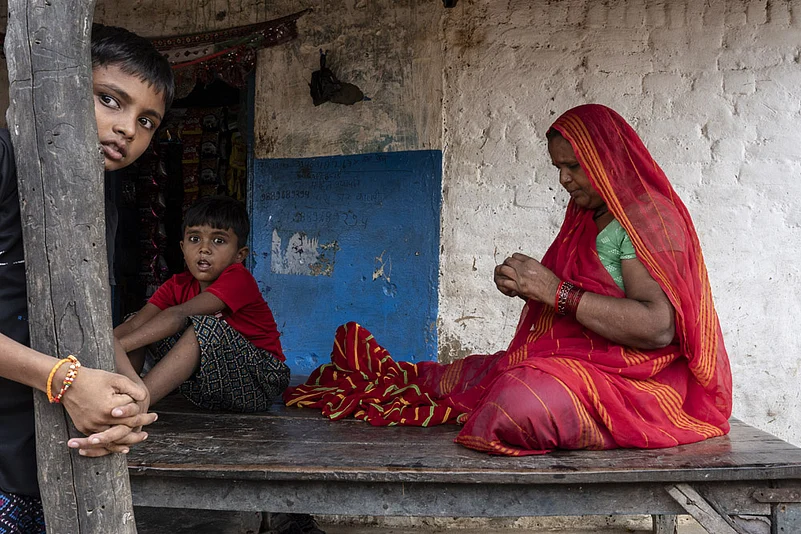Phoolan Devi’s nephew, Nishant, standing in front of her aunt’s statue in her house.
Veiled Truths: What The Women In Phoolan Devi’s Village Do—And Do Not—Say
More than two decades after Phoolan Devi’s death, the women in her village, in Sheikhpur Gudha, Uttar Pradesh, cut a complex picture: confident and diffident, assertive and shy, hopeless and hopeful. They said contradictory things about their safety: yes, it has improved; no, it has not. Some kept quiet. Many girls hadn’t finished school, refusing to divulge the reason. Many hid their faces with veils. But such gloom also accompanied optimism: women feeling proud of their work, not discriminating between their sons and daughters, and hoping for their bright futures. Over the last few years, at least three women from the village have joined the forces, relaying a clear message: that, like Phoolan, we don’t need saviours—we are enough on our own.

A Sheikhpur Gudha resident wearing a t-shirt with a message demanding a CBI inquiry into Phoolan Devi’s murder.
Women from Phoolan Devi’s village stand on the banks of the Yamuna River. The village is largely inhabited by members of the Mallaah community.
Pooja Nishad, 17, watches over her goats grazing on the banks of the Yamuna outside the village.
Ganga Devi sits outside her home, close to Phoolan Devi’s house that functions as a shrine for the local villagers.
An overview of the centre of Sheikhpur Gudha, which seems to be stuck in time since Phoolan Devi’s death.
Shilpa Nishad uses an umbrella to shield herself from the sun as her buffaloes graze on the riverbank below.
Ramesh Nishad and his sisters studying outside their home in Sheikhpur Gudha. The village takes great pride in its identity as Phoolan Devi’s home and many children know her stories.
A woman descends the banks of the Noon, a seasonal river that meets the Yamuna near Sheikhpur Gudha.




































